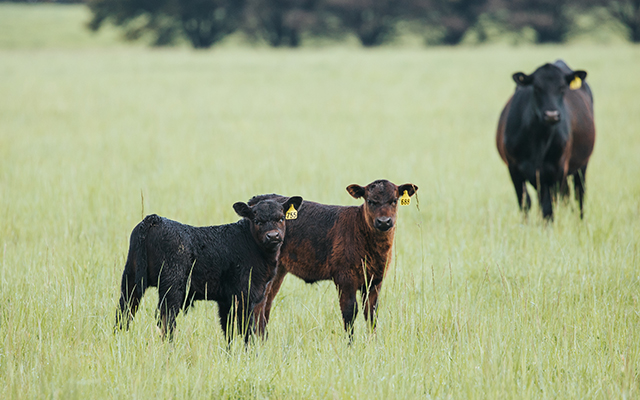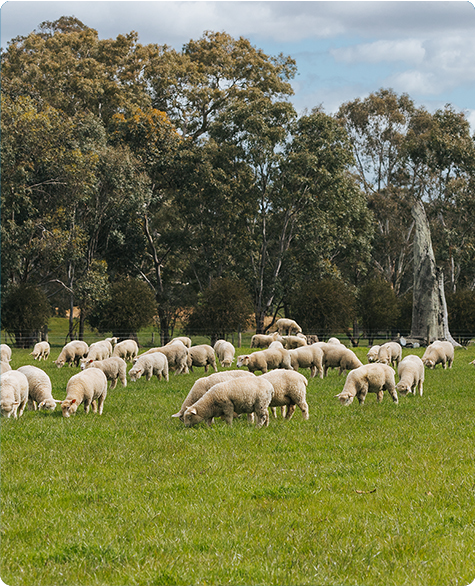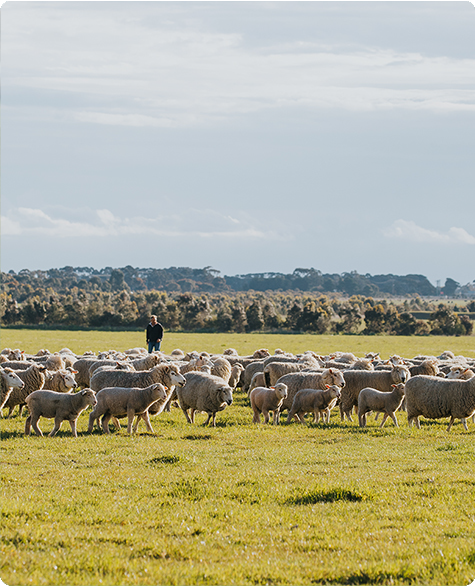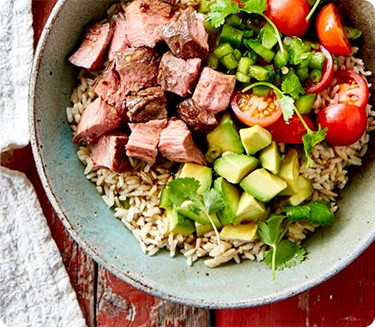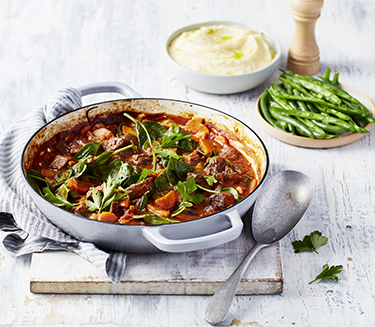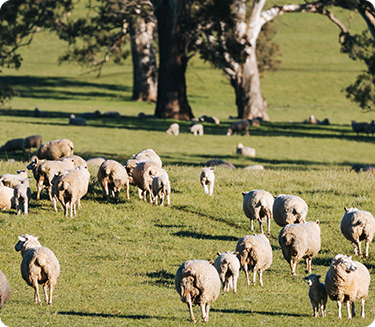Keeping animals pain-free is a fundamental priority for the Australian red meat industry. Standards and guidelines are in place to support the use of pain relief in unavoidable aversive procedures.
The beef industry aims for 100% use of effective pain relief by 2030 for invasive animal husbandry practices. (Source) Currently 31% of Australian cattle producers are regularly using pain relief for invasive procedures.
The sheep industry aims for continuous improvement in the utilisation of appropriate pain relief for aversive animal husbandry practices. The sheep industry reports on the use of appropriate pain relief through the Sheep Sustainability Framework to monitor improvements being implemented. Currently over 80% of sheep producers are using appropriate pain relief for mulesing.
Most cattle born into seedstock are naturally polled.
Almost 72% of calves born into seedstock herds in 2022 were naturally polled (hornless).
The development of effective and practical pain treatments has been a major advance in alleviating the pain during animal husbandry practices such as castration, dehorning, mulesing and tail docking and de-horning, and their use is becoming common practice.
Pain relief products available in Australia for sheep, cattle and goats include fast-acting/short-lasting local anaesthetics and slow-acting but longer lasting analgesics.
How common is the use of pain relief in the livestock industry?
Pain relief is now legislated and enforced through penalties in some states and is a requirement of industry quality assurance programs. By 2030, the beef industry aims to have 100% use of pain relief for invasive procedures.
The Australian Beef Sustainability Framework reported in 2021 that 30% of producers always use pain relief when undertaking aversive animal husbandry practices (castration, dehorning, spaying, disbudding).
Furthermore, the percentage of producers using pain relief for specific aversive procedures represents a majority of the cattle herd receiving relief. For example, while 38% of producers always use pain relief when disbudding, this represents 84% of cattle being disbudded in 2020. (Source)
What else is the industry doing about pain management?
The Australian red meat industry is investing in research to identify ways to reduce pain during animal husbandry procedures. Taking a ‘replace, relieve and refine’ approach, the highest priority is to replace aversive procedures with stress-free, non-invasive procedures. Examples include using genetics to breed out the poll gene in cattle so that dehorning is no longer required. Another example would be the use of a vaccine that causes female sterility to negate the need to surgically spay (or desex) cattle.
If replacing procedures isn’t feasible, second tier research aims to minimise pain of aversive procedures using pain relief.
Thirdly, the industry aims to refine existing procedures by applying a less stressful method in a less stressful way. Examples include devices that provide an anaesthetic as well as analgesic to mitigate pain and stress during castration and tail docking.
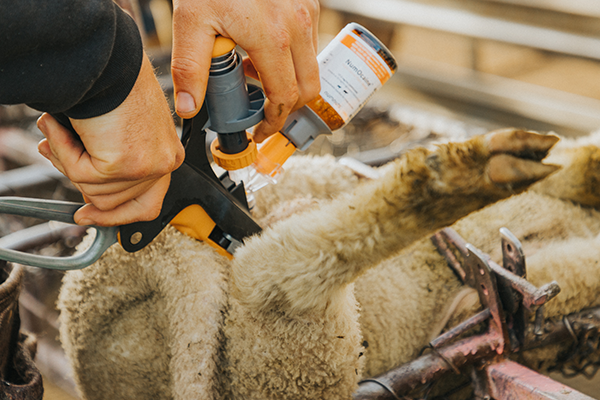
Targeted pain relief being administered during necessary lamb husbandry procedures such as castration
Did you know?
- The Australian beef industry supports the use of pain relief in unavoidable aversive procedures, and aspires to 100% use of pain relief for these procedures by 2030. (Source)
- These days, most cattle are bred without horns to reduce the need to dehorn calves – a practice that helps prevent livestock injuring themselves, other livestock, and human handlers. 73% of the industry are now genetically polled (hornless). (Source)
- A new targeted local anaesthetic delivery system for lambs (Numnuts®) undergoing castration and/or tail docking is now available to producers in Australia and New Zealand


